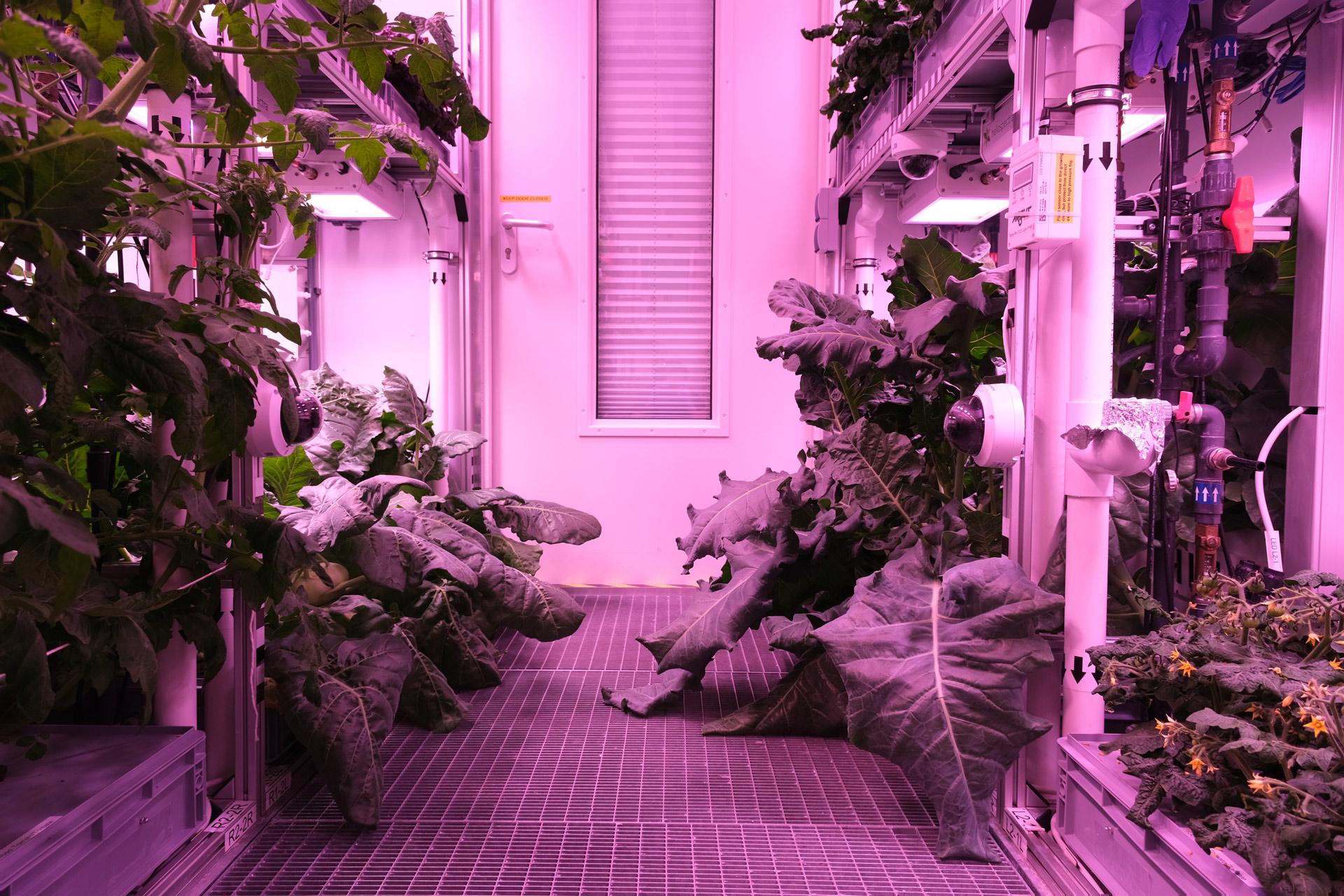NASA's Inflatable Flying Saucer for Mars Landings (Photo Gallery)
LDSD's Rocket-Powered Test Vehicle
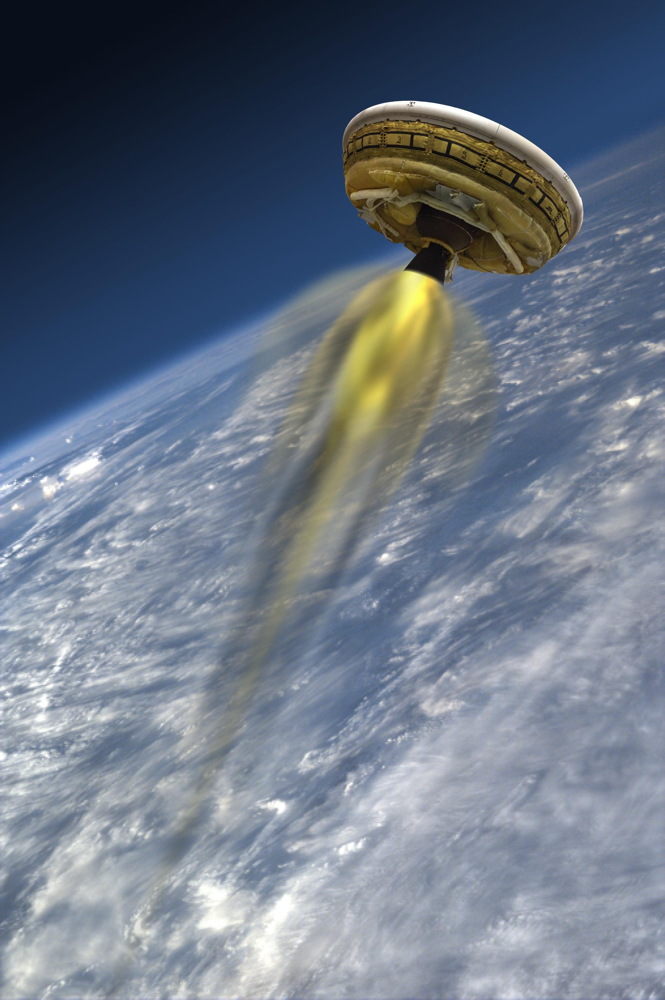
This artist's concept shows the test vehicle for NASA's Low-Density Supersonic Decelerator (LDSD), designed to test landing technologies for future Mars missions. A balloon will lift the vehicle to high altitudes, where a rocket will take it even higher, to the top of the stratosphere, at several times the speed of sound.
NASA LDSD Inflatable Mars Landing Decelerator

NASA's Low-Density Supersonic Decelerator prototype for Mars landing tests awaits a clear launch window at the U.S. Navy's Pacific Missile Range Facility in Kauai, Hawaii.
Engineers Ready Supersonic Decelerator
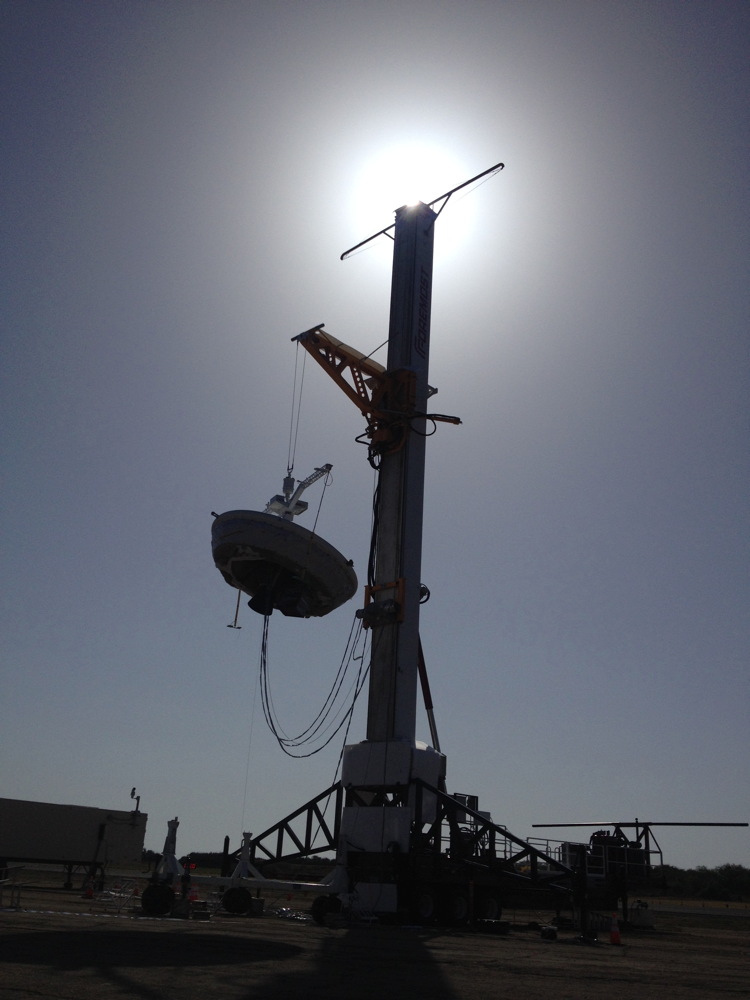
The launch tower helps link the Low-Density Supersonic Decelerator test vehicle to a balloon; once the balloon floats up, the vehicle is released from the tower and the balloon carries it to high altitudes. The vehicle's rocket will take it to even higher altitudes, where the supersonic test begins.
Preparing for a Supersonic Test

A saucer-shaped test vehicle holding equipment for landing large payloads on Mars is shown in the Missile Assembly Building at the US Navy's Pacific Missile Range Facility in Kaua‘i, Hawaii. The vehicle, part of the Low Density Supersonic Decelerator project, will test an inflatable decelerator and a parachute at high altitudes and speeds over the Pacific Missile Range this June. Image released May 16, 2014.
Hang the Saucer
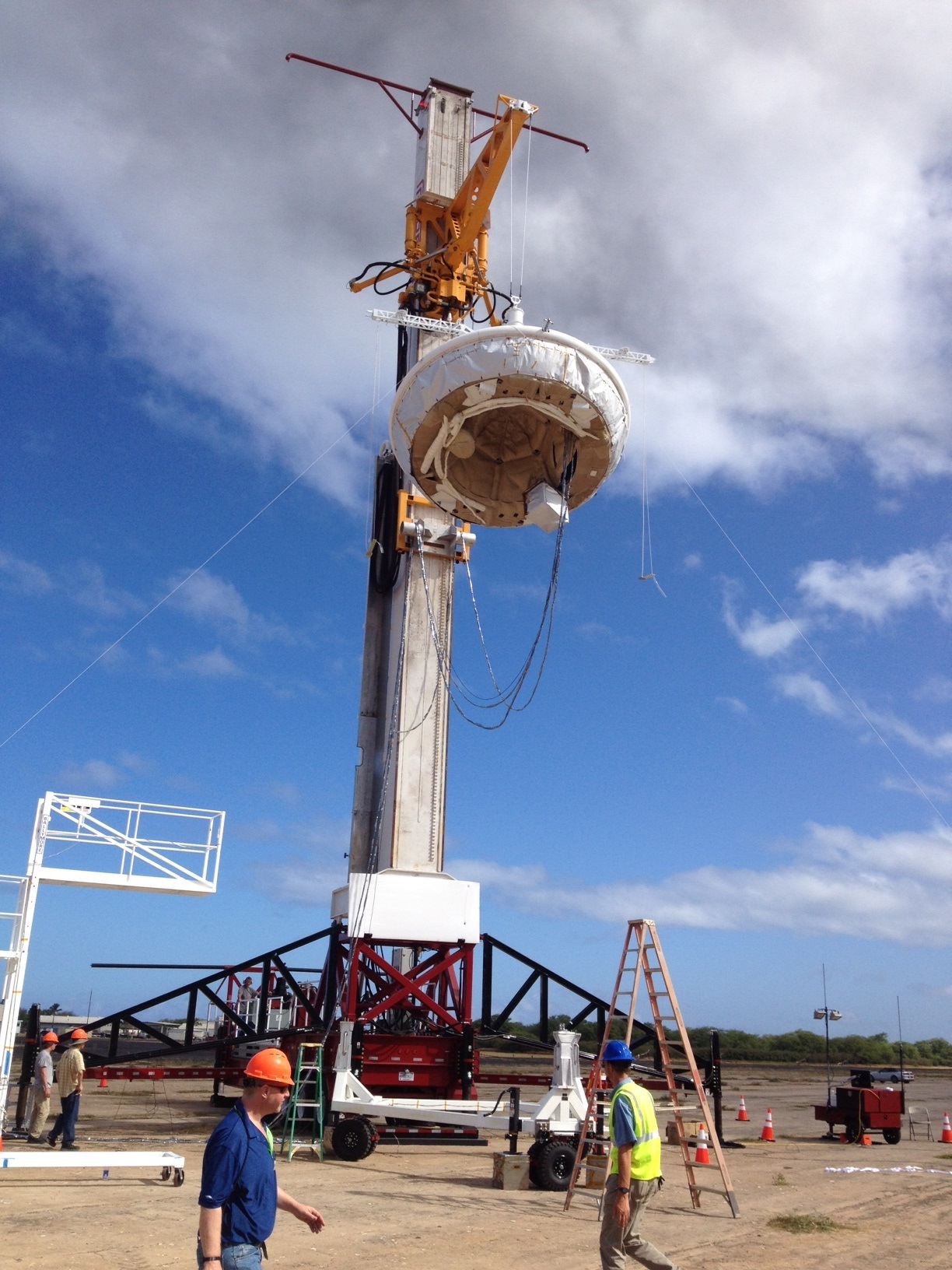
In this picture, NASA’s saucer-shaped experimental flight vehicle is prepared for a Range Compatibility Test at the US Navy’s Pacific Missile Range Facility in Kaua‘i, Hawaii. During the exercise, which occurred on April 23, 2014, all the radio frequencies interfaces between the vehicle, its balloon carrier and the missile range were checked.
Prepping the Parachute Deployment Device
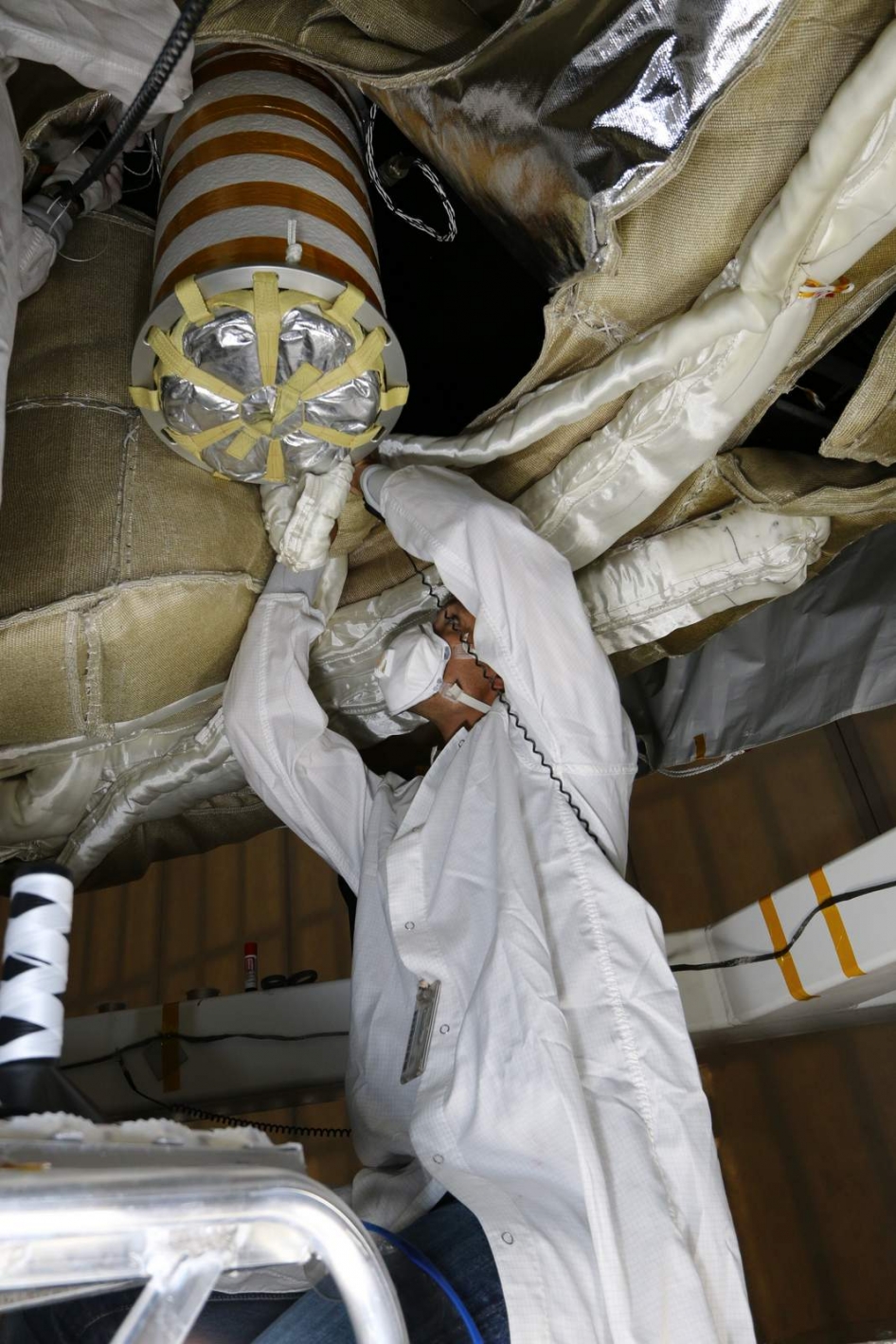
An engineer works on the Parachute Deployment Device of the Low Density Supersonic Decelerator test vehicle in this image taken at the Missile Assembly Building at the US Navy's Pacific Missile Range Facility in Kaua‘i, Hawaii. Image released May 16th, 2014.
NASA's Low-Density Supersonic Decelerator
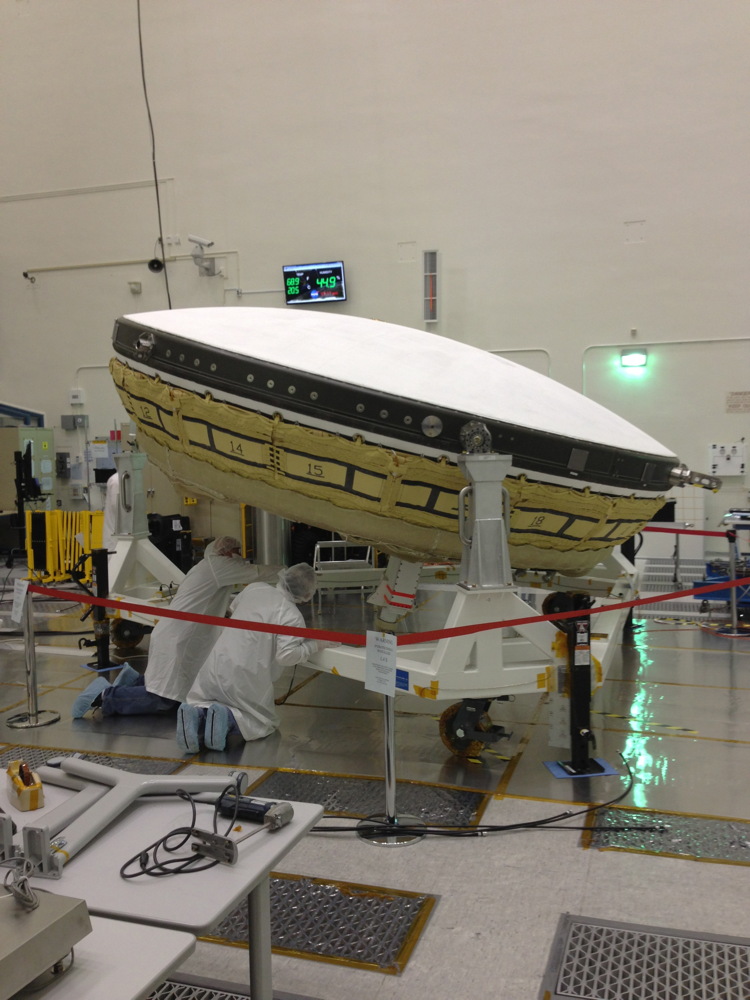
NASA workers at the agency's Jet Propulsion Laboratory, wearing clean room "bunny suits," prepare the LDSD test article for shipment later this month to Hawaii. LDSD will help land bigger space payloads on Mars or return them back to Earth.
Breaking space news, the latest updates on rocket launches, skywatching events and more!
NASA Fires Up Rocket Sled Hardware at China Lake
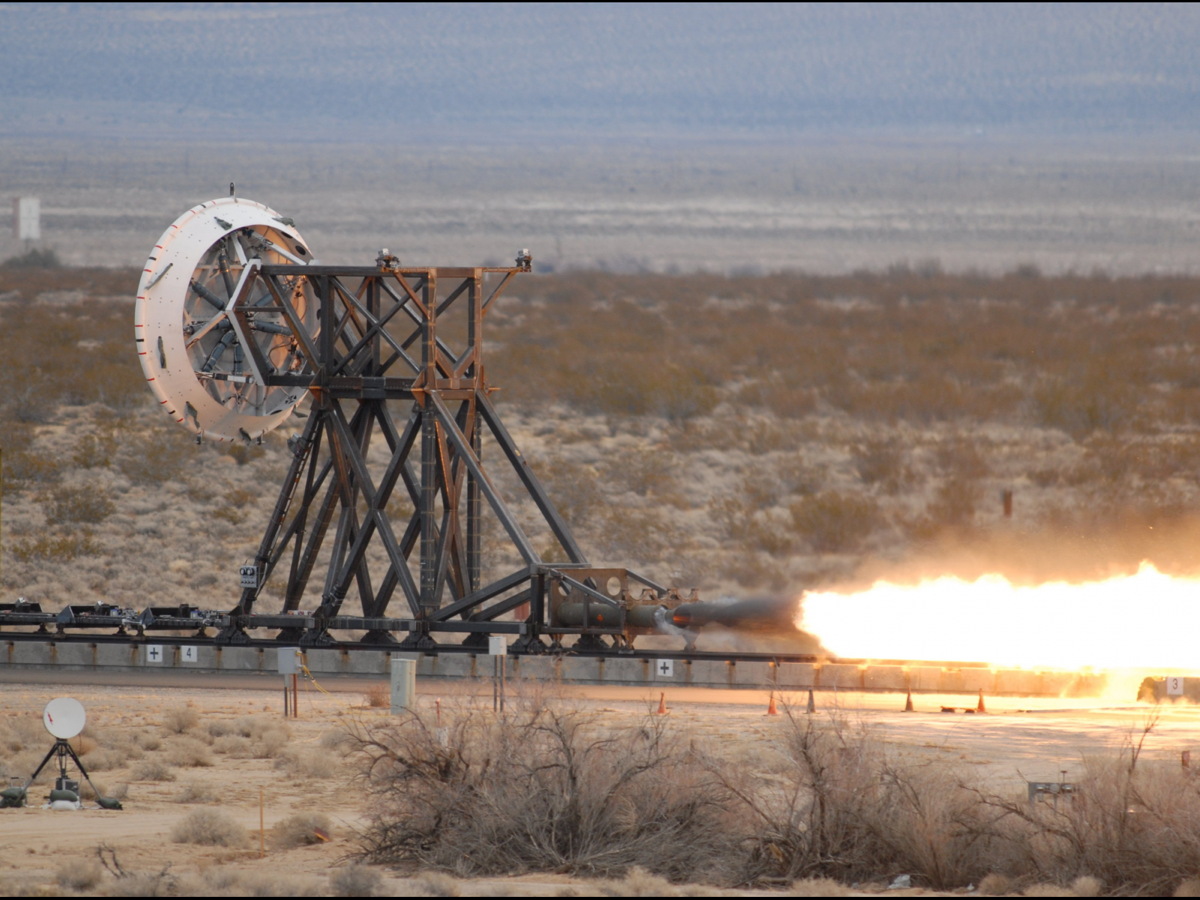
NASA recently performed a trial run on a rocket sled test fixture, powered by rockets, to replicate the forces a supersonic spacecraft would experience prior to landing. The sled tests will allow the Low-Density Supersonic Decelerator Project, or LDSD.
How Mars Landings Work (Infographic)
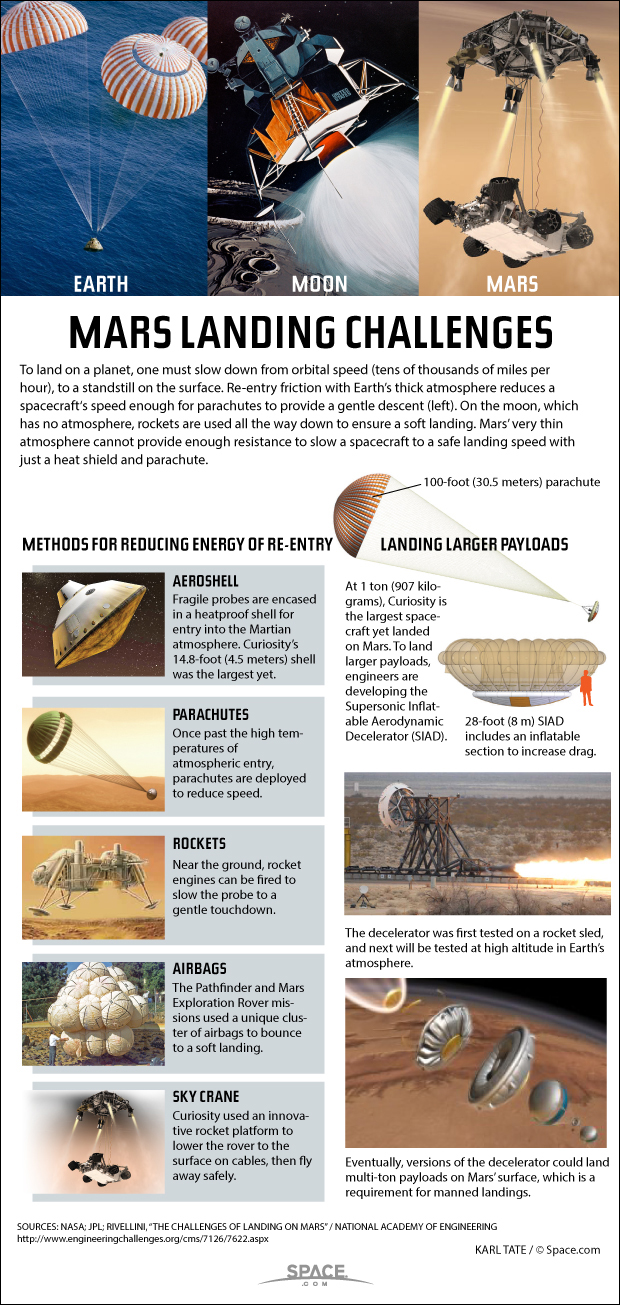
Spacecraft use multiple methods to slow down enough for a safe landing on Mars. See how Mars landings work in this Space.com infographic.
Rocket Sled Parachute Test Ignition

A still from a video shows shows how a supersonic parachute was tested by NASA’s Low-Density Supersonic Decelerator (LDSD) project. A rocket-fired sled and pulley system pulled a one kilometer rope with parachute attached.
Parachute Test Images

A still from a video shows two angles of NASA parachute test. A supersonic parachute was tested by NASA’s Low-Density Supersonic Decelerator (LDSD) project. A rocket-fired sled and pulley system pulled a one kilometer rope with parachute attached. The right image shows the helicopter which carried the parachute aloft. The inset at top shows the winch which redirects the parachute cable to the rocket sled that increases the downward force on the parachute.
Join our Space Forums to keep talking space on the latest missions, night sky and more! And if you have a news tip, correction or comment, let us know at: community@space.com.

Space.com is the premier source of space exploration, innovation and astronomy news, chronicling (and celebrating) humanity's ongoing expansion across the final frontier. Originally founded in 1999, Space.com is, and always has been, the passion of writers and editors who are space fans and also trained journalists. Our current news team consists of Editor-in-Chief Tariq Malik; Editor Hanneke Weitering, Senior Space Writer Mike Wall; Senior Writer Meghan Bartels; Senior Writer Chelsea Gohd, Senior Writer Tereza Pultarova and Staff Writer Alexander Cox, focusing on e-commerce. Senior Producer Steve Spaleta oversees our space videos, with Diana Whitcroft as our Social Media Editor.
